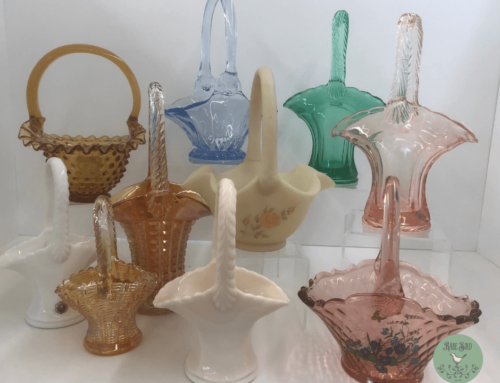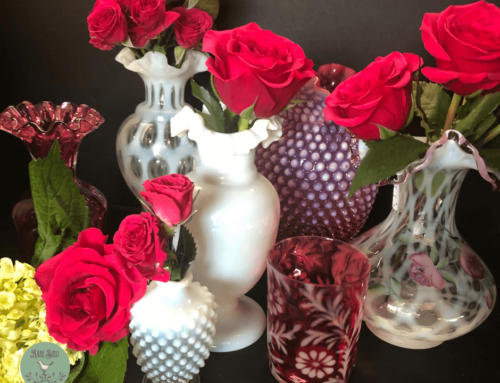What Is Milk Glass?
Opaque glass was first made in Venice. It dates back to the 16th century and was actually produced in several colors – blue, pink, yellow, brown, black and most commonly, white. This white, opaque glass became known as milk glass during the Victorian era which is also when it became hugely popular. Victorians saw milk glass as a more affordable substitute to the pricey porcelain being produced by Wedgewood and Spode.
The process of producing milk glass has evolved over the years. At one point, fluorite was added to the glass. This meant it would actually glow under ultra-violet light because fluorite is fluorescent. In the 1840’s, arsenic was added to get a deep white color which would look opalescent around the edges.
Between 1840 and 1870, flint glass was added to the formula. Because this glass contains lead, it will ring like a bell when tapped. These formulas are not very environmentally friendly however, so today a little bit of pain is added to the mixture.
Of course, quality depends on several factors – the age of the piece, the manufacturer and the condition to name just a few.
Collecting milk glass is a fun hobby. There are many affordable pieces that will certainly gain value over time. Pieces made in the 1950’s and 1960’s are readily available. Pieces from the 1700’s are much rarer and definitely pricier.
Look for identifying marks from manufacturers and learn the patterns to date the glass. For more information, check out:



